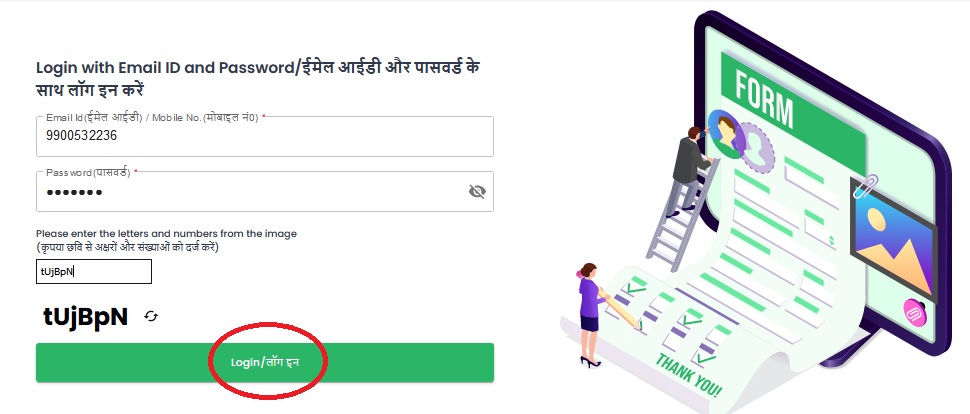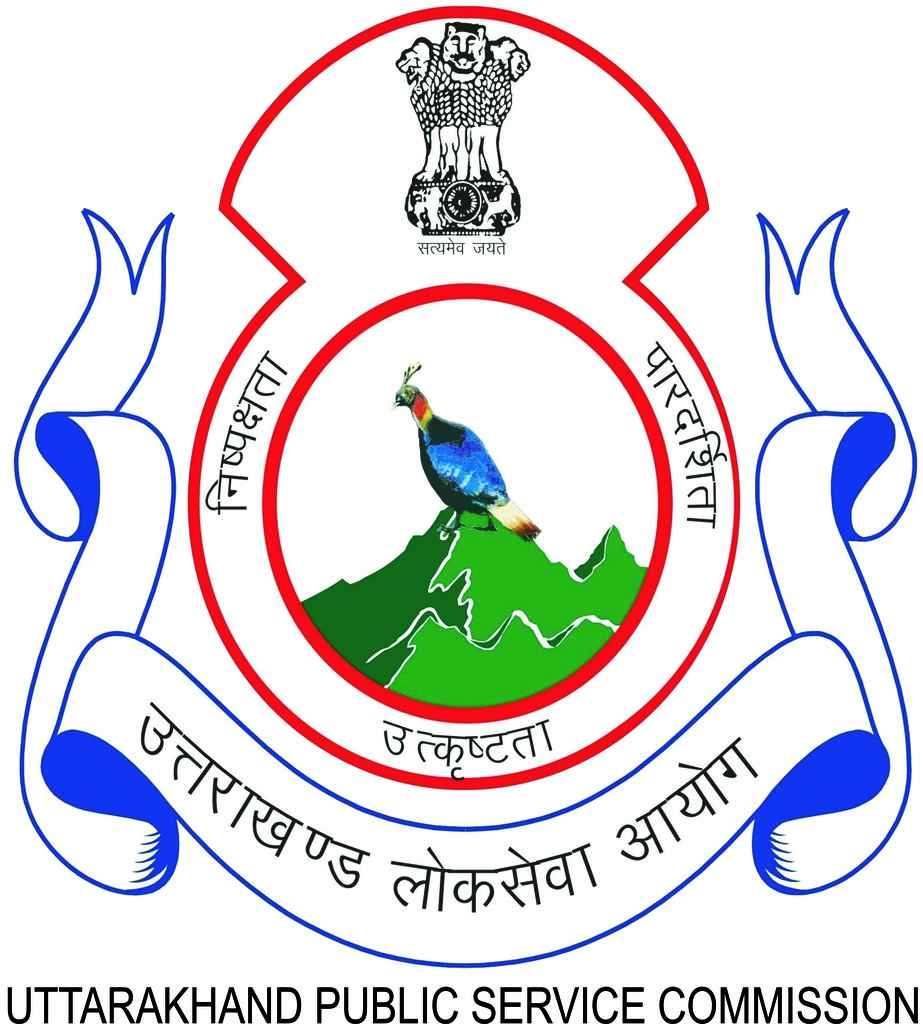UKPSC Download Admit Card 2024 Uttarakhand Combined State Civil/ Upper Subordinate Services Exam
Organisation : Uttarakhand Public Service Commission (UKPSC)
Recruitment Name : Uttarakhand Combined State Civil/ Upper Subordinate Services Exam 2024
Announcement : Download Admit Card
Exam Date : 14-07-2024
Website : https://psc.uk.gov.in/
How to Download Admit Card Uttarakhand Combined State Civil Exam?
To Download Admit Card for Uttarakhand Combined State Civil/ Upper Subordinate Services Exam 2024, follow the below steps,
Steps :
Step-1 : Go to the link https://ukpscnet.in/upcs/exam.html#/jqr/admit-card-login
Step-2 : Enter Email Id / Mobile Number
Step-3 : Enter Password
OR
Step-2 : Enter Application Number
Step-3 : Enter Date of Birth
OR
Step-2 : Enter Name
Step-3 : Enter Date of Birth
Step-4 : Enter Captcha Code and
Step-5 : Click on Login Button.
Related / Similar Admit Card : Karnataka Public Service Commission Download Admission Ticket Group A & B Gazetted Probationer Preliminary Exam 2023-24

Scheme for Uttarakhand Combined State Civil/ Upper Subordinate Services Exam
Uttarakhand Combined State Civil/ Upper Subordinate Examination includes three levels sequentially. For instance-
1. Preliminary (Objective type) Examination
2. Main Examination (Written type)
3. Interview Examination
Preliminary Examination (Objective type) :
S.No. | Question Paper | Subject | No. of questions | Marks | Time Allowed
1 First Paper General Studies 150 (01 mark for each question) 150 2 hours
2 Second Paper General Aptitude Test 100 (1.5 mark for each question) 150 2 hours
Note :
1. The preliminary examination will be of objective type, in which the negative evaluation method will be adopted. For each wrong answer given by a candidate to a question or for more than one answer given by a candidate to the same question (even if one of the answers given is correct), one-fourth (1/4) mark of the marks prescribed for that question will be deducted.
2. Merit list will be prepared on the basis of marks obtained in the first question paper (General Studies). Second question paper (General Aptitude Test) is a qualifying examination, in which it is mandatory to obtain 33 % marks of all category/sub category candidates.

Preliminary Examination Syllabus
First Paper-General Studies (Objective Type)
No of Questions-150 MM-150
Time Allowed: 02 Hours
Note:-Minimum 1/3 questions will be asked with the reference of state of Uttarakhand in total questions 150.
Unit- 3 :
Indian Polity :
National :
1- Parliamentary system
2- Coalition Politics
3. Regionalism, Casteism, Communalism, Terrorism and Naxalism
4. Welfare : SC/ST/OBC’s and Minorities (with reference to constitutional provisions, legal framework, institutional arrangement, process and implications)
5. Gender Politics (Equality, reservation, empowerment, welfare and safety/ security measures)
6. Electoral reforms in India
7. Governance : Institutions and process
8. National integration
9. Nuclear policy of India
10.Environmental Concerns
11.Economic and financial reforms: Liberalization, Privatization and Globalization (LPG) and its impact on politics and governance; planning machinery and planning process and banking sector (RBI, NABARD and IDBI etc)
12.Institutional reforms in India like MNREGA, NRHM, JNNURM etc., Public private partnership (PPP) mode.
13.Citizen Participation in Political and Administrative processes of the country
14.Civil society
15.Lok pal and Lok Ayukt
16.Other related aspects.
International :
1. United Nations
2. International Organization
3. Environmental concerns at global level
4. SAARC, ASEAN, SAFTA and another regional groups
5. India’s Approach to major world issues: Disarmament, Human Rights and Globalization
6. BRICS and its importance for India
7. Other related aspects
Constitution of India :
1. Constitutional Development in India
2. Constituent Assembly
3. Preamble
4. Basic Features of Indian Constitution (Including its various parts, Important articles and schedules)
5. Fundamental Rights and Duties
6. Directive Principles of State policy
7. Constitutional Amendment method and important constitutional amendments
8. Federal and Parliamentary system of Governance in India
9. Parliamentary Committees (Public Accounts committee, Estimate Committee and Joint Parliamentary Committee)
10. Constitutional Bodies : Election Commission and Comptroller and Auditor General
11. Judiciary : Supreme Court and High Courts
12. Other related aspects
Indian Polity :
1. Union Executive : President, Prime Minister and Council of Ministers, Cabinet Secretariat, Central Secretariat and PMO
2. State Executive : Governor and Chief Minister and Council of Ministers, State Secretariat and Chief Secretary
3. Union Parliament and State Legislatures in India
4. Election Machinery and Process
5. Political Parties and Pressure Groups
6. Politicians and Civil servant Relationships
7. Development of Political Culture in India
8. Agencies of Political socialization
9. Evolution and Growth of Administrative system in India
10. Re-organization of states in India
11. Administration of Union Territories and other specified states and areas in India
12. Administrative reforms (including various important Committees and Commissions)
13. District Administration
14. Other related aspects
Panchayati Raj :
1. Local Governance : 73rd and 74th Constitutional Amendment Acts
2. State Finance Commission : Functions and Role
3. Devolution of powers to local bodies
4. Types of local bodies in India : Municipal corporations, Municipal councils, Nagar Panchayat, Gram Panchayat, Panchayat Samities and Zila Parishad
5. Other related aspects
Public Policy :
1. Good Governance : Citizen Charter and E-Governance
2. Prevention of Corruption and Lok Pal and Lok Ayuktas
3. Right to Information
4. Right to Education
5. Right to services
6. Other related aspects
Issues Concerning Rights :
1. Fundamental Rights
2. Protection of Civil Right Act, 1955
3. Various rights pertaining to protection of SCs, STs, Issues related Minorities, Women and Children and Old persons in India
4. Other related aspects.
Political System of Uttarakhand :
Governance, Governor, Legislation, Chief Minister, Council of Ministers, Central State Relation, Public Services, Public Service Commission, Auditing, Advocate General, High Court and it’s jurisdiction, Provision for minorities, Schedule Caste/Tribes, Special State Selection Criteria, Official Language, Consolidated fund and Contingency Fund, Political Parties and Election, Local Government and Panchayati Raj, Community Development, Public Policy, Right Related Issues (Education, Employment, Development etc.) Governance (Prevention of Corruption, Lok Ayukt, Citizen charter, E-Governance, Right to Information, Samadhan Yojna etc.) and other related aspects.
Unit – 4 :
Economic and Social development
National :
1. Economic Policy : Economic Reforms in India, Liberalization, Privatization and Globalization.
2. Foreign Direct Investment (F.D.I), Inflation, Inclusive Growth, Economic development v/s Environmental conservation.
3. Programmers for eradication of poverty and unemployment. Human Development Index (H.D.I).
4. Census and Main features of India and population. Population and Economic Development. Issues related to urbanization.
5. Main features of the union budgets.
6. Main features of the economy of India.
7. Natural and energy resources of India, Trade (with external sector), Commerce, Industries, Schemes and Projects and direction of Economic Growth.
8. Tax reform and and Banking Business.
9. Planned Development.
10. National Development Council.
11. National Income.
12. Indian Agriculture (Agricultural productivity, Livestock, Green Revolution, Food Security, Food grain prices, Buffer stock, Agricultural Policy, Agricultural/Seed crop insurance scheme).
13. Indian Financial/Money/Capital/Security Market.
14. Insurance sector, Tax structure, Public finance and fiscal policy.
15. Concepts (Rolling plan, Sweat shares, Hawala, Gilt edge market, Black market, Black money etc).
16. Other related aspects.
International :
1. World Trade Organization (W.T.O) International Bank for Reconstruction and Development (IBRD). International Monetary Fund (IMF), World Bank, South Asian Association for Regional Co-operation (SAARC). Association of South East Asian Nations (ASEAN). South Asian Preferential Trade Agreement (SAPTA), BRICS, OPEC and Other regional Economic and commercial organizations.
2. International flow of capital, human resources and technology.
3. Foreign Exchange Regulation Act (FERA). Foreign Exchange Management Act (FEMA). Prevention of Money Laundering Act (PMLA).
4. World Human Development Index.
5. Glossary.
6. Other related aspects.
Uttarakhand :
Main Features of economy and budgets, Natural and energy resources, Trade, Commerce, Industries, Schemes and Projects, Tax and economic reforms, Planned development, Agriculture, Live Stock, Food security, Public Finance and fiscal Policy, Census, Human Development Index, Tourism, Role of herbs and culture in the economic development. Other related aspects.

Recent Comments